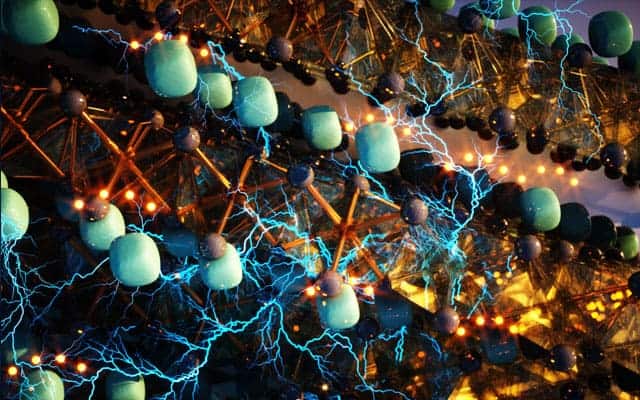In an effort to curb the rise in overall carbon vehicle emissions, the state of California recently announced a plan to ban new sales of gasoline-powered vehicles in less than 15 years – if the current governor’s order holds strong.
Now, thanks to supercomputers funded by the National Science Foundation such as Comet at the San Diego Supercomputer Center (SDSC) at UC San Diego and Stampede2 at the Texas Advanced Computing Center (TACC), the research community has been making progress on developing more reliable and efficient electric cars and light trucks as well as other products by focusing on the batteries that power them.
Three such university teams that recently were given allocations on these supercomputers include researchers from UC San Diego, Washington University in Saint Louis, and Washington State University.
“We have been working on making lithium-ion batteries longer lasting and faster charging for many years,” said Shyue Ping Ong, associate professor of nanoengineering at UC San Diego. “Comet was crucial for performing the calculations to elucidate the unique lithium insertion and diffusion mechanisms responsible for the high-rate capability in a new anode material we are developing.”
This new Li3V2O5 anode, which is a safer alternative to the typical graphite anode found in today’s lithium-ion batteries, was the focus of Ong’s recent publication in the journal Nature. The study was co-authored by UC San Diego’s Sustainable Power and Energy Director Ping Liu, who explained that this new anode approach can be cycled for more than 6,000 times with negligible capacity decay, and can charge and discharge energy rapidly, delivering over 40 percent of its capacity in 20 seconds.
This means that future lithium-ion batteries could provide greater than 70 percent more energy than current ones. Specifically, the anode proposed and studied by Ong and Liu is known as a disordered rocksalt anode.
“This Comet-enabled computational discovery points the way to other anode materials operating under the same mechanism,” said Ong. “Access to high-performance computing resources obviates the need for my group to buy and maintain our own supercomputers so that we can focus on the science.”
Details about this project can be found in this UCSD News article.
Could Lithium-Air Batteries Be Another Solution for Future Vehicle Power?
Another possibility for more efficient electric car power is the lithium-air battery (Li-air), which would be an attractive alternative as it converts oxygen in the air to electricity. While it is not on the market, it could be more popular by offering some of the highest specific energies – energy per kilogram of battery – and therefore increase a vehicle’s range per charge.
Researchers such as Rohan Mishra at Washington University in Saint Louis, along with collaborators at University of Illinois Chicago, recently made great strides in their work by creating new two-dimensional alloys that may lead to highly energy-efficient Li-air batteries with excellent stability over numerous charge-discharge cycles.
“Lithium-air batteries can provide high-energy density that makes them excellent for electric cars,” said Rohan, a computational materials scientist and assistant professor of mechanical engineering and materials science. “We have just synthesized several alloys that would allow for great progression in the development of these batteries to be feasible for manufacturing. These alloys were synthesized with guidance from intensive calculations completed on Stampede2 at TACC and Comet at SDSC.”
Now that Mishra and his colleagues have a better grasp on how these alloys react with one another, they will focus on further improving the energy efficiency of these batteries.
Mishra and his colleagues published their latest findings in the Advanced Materials journal. Additional information about their alloy development can also be found in this Washington University article.
More recently, Mishra’s team identified a family of rare compounds called electrides that can enable stable and rechargeable fluoride ion batteries. Fluoride ion batteries can help overcome issues related to the limited supply of lithium and cobalt used in current Li-ion batteries. These findings were published in the Journal of Materials Chemistry A and more information can be found in the article from Washington University.
Improved Lithium-Sulfur Batteries Offer A Third Option
Although lithium-sulfur batteries have been available for many years, they are slow to charge and must be frequently replaced. The high theoretical capacity, energy density, and low cost of sulfur has drawn more attention to this battery type as a potential answer to the future of electric-powered vehicles.
“Lithium-sulfur batteries hold great promise to meet the ever-increasing demands for high energy density power supplies,” said Jin Liu, associate professor of mechanical and materials engineering at Washington State University. “Our recent study demonstrated how slight molecular changes to current designs can greatly improve battery performance.”
Liu’s study, published in Advanced Energy Materials, included experiments that were first simulated on Comet and Stampede2. The molecular-scale detailed simulations and follow-up experiments showed that short-branched proteins (proteins composed from short-length amino acid residues) were much more effective in absorption of polysulfides compared with long-branched proteins, suppressing shuttling of polysulfides and resulting in increased battery performance.
“The proteins, in general, contain a large number of atoms and the protein structures are extremely complex,” said Liu. “The molecular simulations of such systems are computationally extensive and only possible using supercomputers such as Comet and Stampede2.”


